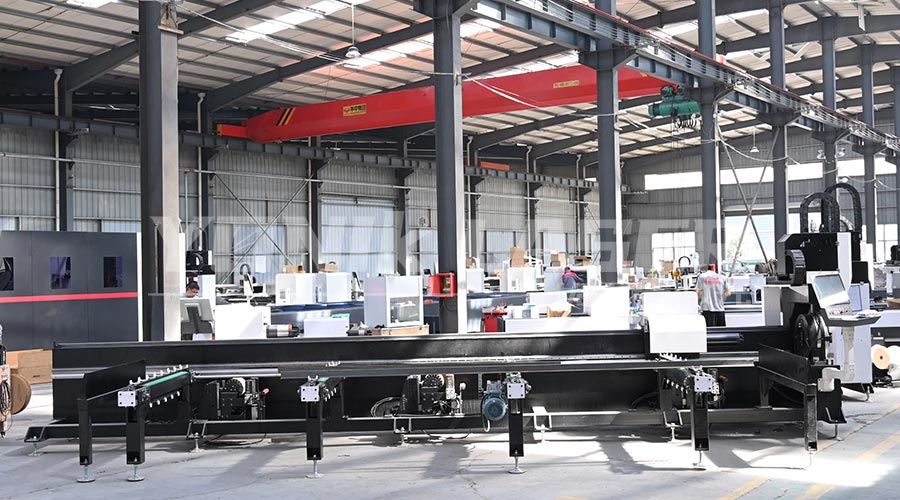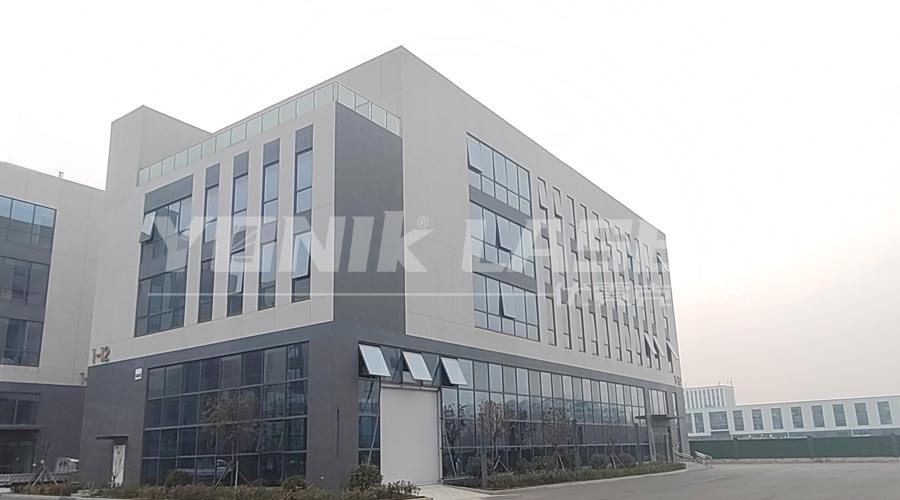In the process of manufacturing moving towards intelligence and precision, laser cutting machines have become core equipment in fields such as metal processing, aerospace, and automotive manufacturing due to their advantages of high precision, high efficiency, and non-contact processing. However, faults caused by issues such as optical system misalignment, cooling system abnormalities, and mechanical component wear during equipment operation not only affect production efficiency but may also lead to material waste and safety hazards. This article will provide enterprises with actionable laser cutting machine operation and maintenance guidelines from three dimensions: fault phenomenon analysis, systematic troubleshooting processes, and typical maintenance cases, combined with the latest technological trends in the industry.

I. Classification of Fault Phenomena and Root Cause Analysis
Laser cutting machine faults can be categorized into five major types, each with multi-dimensional causes:
1. Abnormal Cutting Quality
This manifests as rough cutting surfaces, slag adhesion, and dimensional deviations. For example, when cutting aluminum alloys, if nitrogen with a purity of less than 99.999% is used, the cutting speed should be controlled within 60% of that for stainless steel; otherwise, increased oxidation reactions can lead to slag splashing. An aerospace component manufacturer once experienced a 15% drop in the pass rate for cutting engine blades due to insufficient gas purity. After replacing the gas with high-purity nitrogen and optimizing the pressure parameters, the issue was resolved.
2. Equipment Operation Interruptions
These commonly occur due to laser head collision alarms, emergency stops being triggered, and water cooling system protection. An automotive manufacturing enterprise's production line once suffered frequent laser head collisions with sheet materials due to a loose Z-axis limit sensor, resulting in equipment shutdowns and sheet material scrap. By tightening the sensor and recalibrating the origin, the fault rate was reduced by 90%.
3. Optical System Failures
These include laser power attenuation, beam spot misalignment, and lens contamination. A 3C electronics manufacturer noticed periodic streaks on the cutting surface of 0.5 mm stainless steel. Upon inspection, it was found that the coating on the focusing lens had peeled off. After replacing the lens, the cutting quality was restored to a surface roughness (Ra) of less than 1.6 μm.
4. Electrical System Faults
These involve power supply abnormalities, control card crashes, and signal transmission interruptions. A new energy battery tray processing enterprise once experienced frequent control card restarts due to a grounding resistance of 12 Ω in the RS232 communication line. By optimizing the grounding system to reduce the resistance to below 4 Ω, the equipment stability was significantly improved.
5. Mechanical Transmission Abnormalities
These manifest as guide rail jamming, belt loosening, and gear wear. A heavy machinery enterprise noticed a Y-axis positioning error of 0.3 mm when cutting 10 mm carbon steel in large batches. Upon inspection, it was found that the synchronous belt tension was insufficient. After adjustment, the error was controlled within 0.05 mm.
II. Six-Step Systematic Troubleshooting Process
Based on the operation and maintenance experience of leading enterprises in the industry, a six-step troubleshooting method is recommended: "Basic Status Confirmation—Core Module Diagnosis—In-Depth Fault Handling—Special Scenario Disposal—Preventive Maintenance—Emergency Response Protocols."
1. Basic Status Confirmation
Power System Inspection: Confirm that the main switch, emergency stop buttons, and connection terminals are free of loose connections. Use a multimeter to check the stability of the input voltage.
Cooling System Monitoring: Check the water temperature (should be ≤23°C) and water flow rate (should be ≥4 L/min) on the water chiller display. In one case, a laser generator high-temperature alarm was triggered due to insufficient water pump flow. After cleaning the filter, the flow rate recovered to 5.2 L/min, eliminating the fault.
Gas System Verification: Inspect the gas pressure gauges and filter status. One enterprise reduced the gas pressure fluctuation range from ±0.2 MPa to ±0.05 MPa by draining condensed water from the gas filter daily.
2. Core Module Diagnosis
Laser Component Detection: Observe the color of the laser tube emission (pink is normal; violet indicates replacement is needed). Use a spectrometer to check for 915 nm wavelength attenuation. When attenuation exceeds 40%, the laser tube should be replaced.
Optical Path System Calibration: Use the three-point alignment method to adjust the reflecting mirrors and focusing lens, ensuring a beam spot center deviation of ≤0.05 mm. A precision processing enterprise improved the cutting section perpendicularity from 88° to 90.5° through monthly optical path calibration.
Control System Inspection: Check the grounding resistance of the RS232 communication line (should be ≤4 Ω). In one case, signal interference in the control card due to poor grounding was resolved by installing an independent grounding electrode.
3. In-Depth Fault Handling
Laser Generator High-Temperature Alarm: Check the water pump flow rate and cooling fan speed. One enterprise reduced the internal temperature of the laser generator from 58°C to 45°C by cleaning the condenser dust.
Cutting Interruption with No Light Output: Check the voltage at pins 15/16 of the control card (normal value ≥3 V). In one case, voltage drop to 2.8 V due to aging board capacitors caused the issue. After replacing the capacitors, stable light output was restored.
No Light Output After Overnight Shutdown: Check the sealing of the QBH interface and condensed water penetration. One enterprise improved the overnight startup success rate from 70% to 98% by replacing the O-ring on the interface.
4. Special Scenario Disposal
Moving Light Leakage: Introduce dry nitrogen and check the PWM signal shielding grounding. In one case, light leakage due to a damaged signal line shield was resolved by re-soldering the shield.
Cutting of Highly Reflective Materials: For materials like copper and aluminum, adopt pulsed piercing technology and adjust the auxiliary gas pressure. One enterprise reduced slag thickness from 0.2 mm to 0.05 mm by increasing the aluminum alloy cutting pressure from 0.8 MPa to 1.2 MPa.
5. Preventive Maintenance
Optical System Maintenance: Clean the focusing lens with isopropyl alcohol weekly and calibrate the optical path perpendicularity monthly. Establish a power attenuation database and trigger alerts when attenuation exceeds 15% over 3,000 hours.
Mechanical System Maintenance: Apply special lubricating grease to the guide rails every 500 hours and regularly check the belt tension (deflection should be controlled between 6-8 mm). One enterprise extended the equipment overhaul cycle from 1 year to 2 years through these measures.
Cooling System Optimization: Replace the cooling water and clean the heat dissipation system quarterly. In one case, a 0.8°C temperature drift due to fan dust accumulation was resolved by cleaning the fans, improving temperature stability.
6. Emergency Response Protocols
Laser Tube Explosion: Immediately cut off the power and close the water inlet valve. Record the fault code and equipment usage time. One enterprise extended the recurrence cycle of similar faults from 3 months to 9 months by establishing a fault log database.
Sudden Power Outage: Activate the UPS uninterruptible power supply to protect the control card data. One data center avoided program loss accidents due to power outages through this measure.
III. Typical Maintenance Cases and Data Support
1. Repair of Tilted Cutting Sections
An enterprise encountered a 10° tilt when cutting 12 mm carbon steel. Upon inspection, it was found that the cutting head was loose and the external optical path was tilted. By tightening the cutting head screws and readjusting the reflecting mirror angles, the tilt was reduced to 0.5°, improving cutting efficiency by 25%.
2. Dimensional Deviation Optimization
A precision parts manufacturer noticed a 0.15 mm deviation in the X-axis direction when cutting 0.3 mm stainless steel. By calibrating the pulse equivalent (adjusted from 0.01 mm/pulse to 0.008 mm/pulse) and optimizing the kerf compensation parameters, the deviation was reduced to 0.02 mm, increasing the product pass rate from 85% to 98%.
3. Slag Control Breakthrough
A new energy vehicle battery box processing enterprise encountered 0.3 mm slag thickness when cutting 6 mm aluminum alloy. By using high-purity nitrogen (99.999%), reducing the cutting speed to 1200 mm/min, and adjusting the focal position to 2 mm below the sheet surface, the slag thickness was reduced to below 0.05 mm, cutting subsequent grinding time by 60%.
IV. Industry Trends and Maintenance Upgrades
With the integration of AI technology and digital twins, laser cutting machine maintenance is transitioning from "reactive response" to "proactive prevention":
Intelligent Diagnostic Systems: An AI cutting monitoring system developed by a German enterprise can analyze slag morphology, beam spot energy distribution, and other data in real time, predicting lens contamination risks 48 hours in advance and reducing unplanned downtime by 70%.
Predictive Maintenance: By establishing a laser tube power attenuation model, one enterprise extended the laser tube lifespan from 3,000 hours to 5,000 hours, reducing annual maintenance costs per machine by 120,000 yuan.
Remote Maintenance Platform: A 5G remote maintenance system launched by a domestic equipment manufacturer can transmit over 200 parameters such as equipment vibration, temperature, and current in real time. Expert teams can locate fault roots within 10 minutes, improving the overall equipment effectiveness (OEE) of cross-regional equipment by 18%.

Conclusion
The stable operation of laser cutting machines is the cornerstone of high-quality manufacturing development. By implementing systematic troubleshooting processes, establishing preventive maintenance systems, and integrating intelligent diagnostic technologies, enterprises can increase the overall equipment effectiveness to over 85%, with a single machine creating an additional annual value of 500,000 yuan. In the wave of Industry 4.0, mastering core laser cutting machine maintenance skills has become a key factor for enterprises to build competitive advantages.
2025-07-22
2025-07-21
2025-07-19